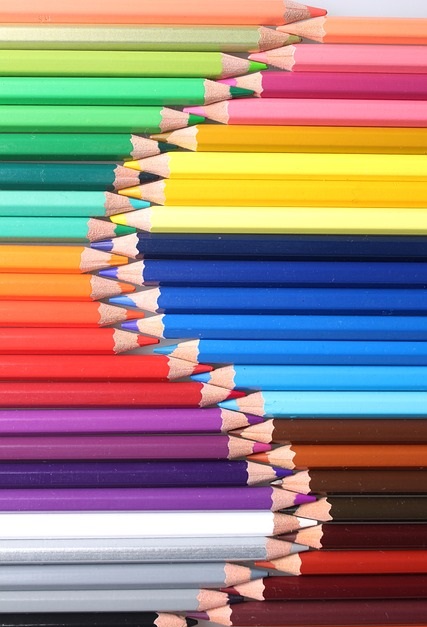Or search by topic
Number and algebra
Geometry and measure
Probability and statistics
Working mathematically
Advanced mathematics
For younger learners
Count the Crayons



- Problem
- Getting Started
- Student Solutions
- Teachers' Resources
Count the Crayons
Take a look at these pictures:


Estimate how many pencils you can see in each one.
What was your method?
How else could you do it?
Is there one way that is particularly useful? Why?
Why do this activity?
This activity is designed to support children as they begin to estimate by grouping in 10s.
It will encourage the idea of different possible answers and children talking about, and justifying, their methods.
Possible approach
Empty a tray of pens or pencils onto the floor and ask the class how they could go about working out how many there are. This is a good opportunity for talk partners and you are likely to just get counting strategies at this stage.
As the class share their ideas, get them to consider how long each approach would take.
You might need to jumble the pens up and maybe add/remove some before challenging the class to now decide how many pens there are, given only a very short amount of time. The pens could be hidden and then revealed briefly. What do the class discover? Counting strategies take too long but are very accurate.
Tell the class that you do not need an exact amount, an approximation will do. Ask children to talk to a partner about how they could do this. Then test the strategies as the pens are briefly revealed again. Collate ideas and draw out the idea that grouping into 10s is useful.
The pens can then be revealed a final time and the class can be challenged to use this grouping into 10s strategy. Collate answers and suggest that this is our range of possible solutions.
Key questions
How did you come to your answer?
Did imagining grouping the items into 10s help you?
Did anyone on your table use a different approach?
How many do you think there are?
Does everyone agree?
What is the range of answers?
Possible extensions
You could show either a tray or an image of a large number of pencils to children and challenge them to do a similar thing. How about grouping in 100s?
Possible support
Tracing paper or a transparent sheet that can be placed over an image may help the children to group items in the picture into 10s.
Related Collections
You may also like
Let's Investigate Triangles
Vincent and Tara are making triangles with the class construction set. They have a pile of strips of different lengths. How many different triangles can they make?

